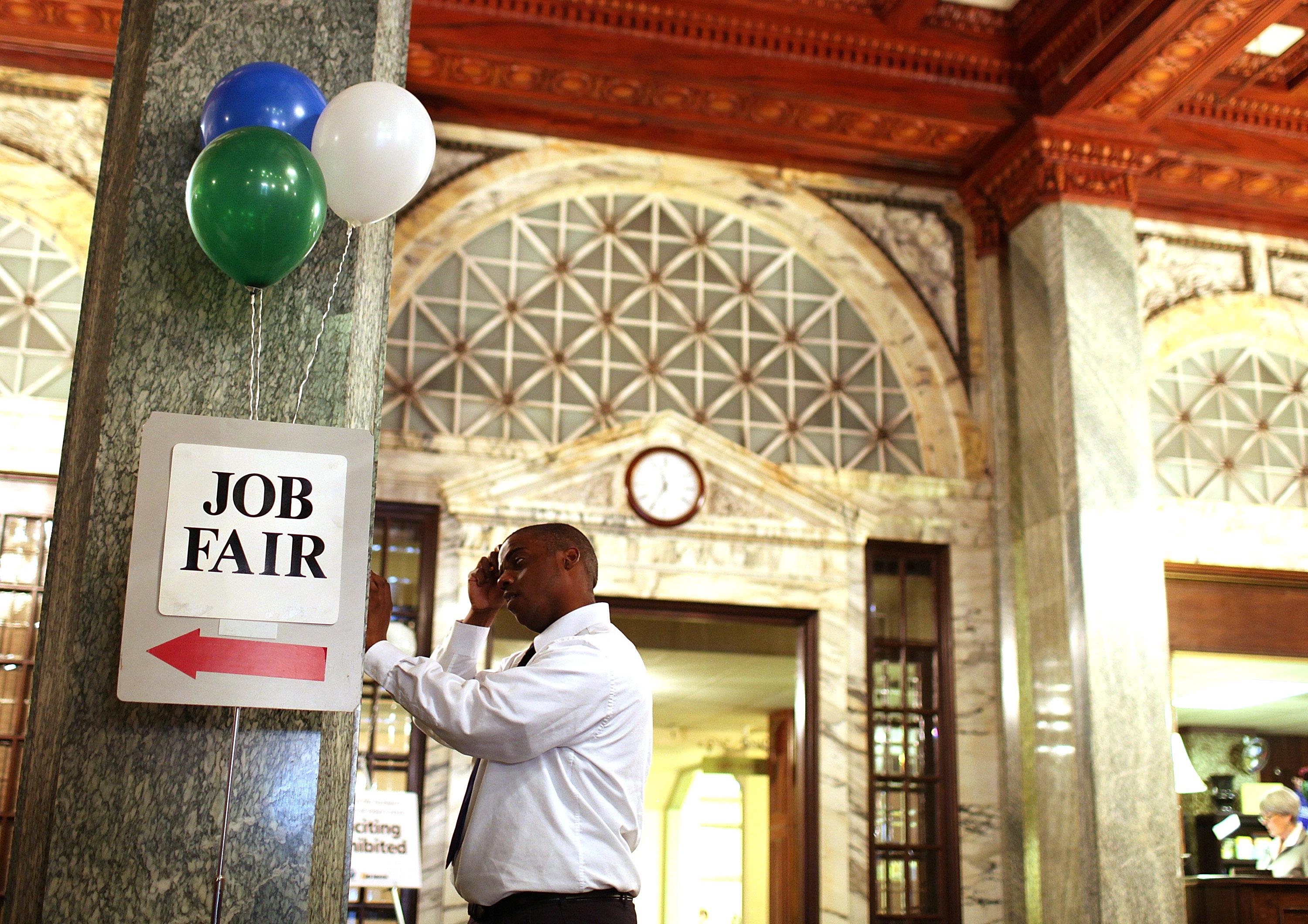National Urban League 2015 Unemployment Rankings: Toledo Has It Bad
National Urban League Releases Unemployment, Income Rankings By Metro Area, And Toledo Has It Bad

Source: Job Seekers Attend Job Fair In San Francisco (Photo by: Justin Sullivan) / Getty
According to Marc Morial, president and CEO of the National Urban League, the start of 2015 saw the most sustained period of job creation this century. Indeed, that seems like good news, except for the fact that Black unemployment remains twice that of White unemployment, and wages are stagnant for those who do have jobs.
“Many people who are working are simply not earning what they need or should earn to make ends meet,” writes Morial in his introduction of the annual State of Black America this year titled, “Save Our Cities: Education, Jobs + Justice.” “Whether one calls it income inequality, upward social mobility, decline of the middle class, eliminating poverty among working people or something different, it is one of the great challenges facing post-recession America.”
As part of the report, which is available today in full here, the NUL, an organization focused on economic empowerment for African Americans, provides rankings of unemployment and income equality in approximately 70 metro areas between whites, Blacks and Latinos in the nation’s largest jurisdictions.
UNEMPLOYMENT:
The metro with the highest Black unemployment rate (23 percent) was Toledo, OH. In fact, Toledo, also saw the lowest median Black household income ($21,699) – most likely related to the astronomical unemployment rate. The smallest Black-White unemployment gap was in the Providence-Warwick, RI-MA metro area (last year’s number 1 area, Augusta-Richmond County, GA-SC – fell from the top 10 this year). The area of the country with the lowest unemployment rate for both Blacks and whites was Omaha-Council Bluffs, NE-IA.
INCOME EQUALITY:
The State of Black America reports that the Black-White Income Equality Index rankings were relatively stable between 2014 and 2015. Riverside-San Bernardino-Ontario, CA remained at the top of the Black-White Income Equality ranking this year with the median Black household having 71 cents for every dollar of median white household income. In general, the highest median household income for both Blacks ($64,663) and whites ($108,254) was in Washington-Arlington-Alexandria, DC-VA-MD-WV. This was true for Hispanics as well.
Overall (taking into account Economics, Health, Education, Social Justice and Civic Engagement,) the 2015 Equality Index of Black America for 2015 is 72.2 percent, which means that compared to the full equality that Whites enjoy, African Americans are missing about 28% of the pie.
To see where your area of the country may rank in Income Equality and Unemployment Equality, access the National Urban League State of Black America report at www.stateofblackamerica.org.















